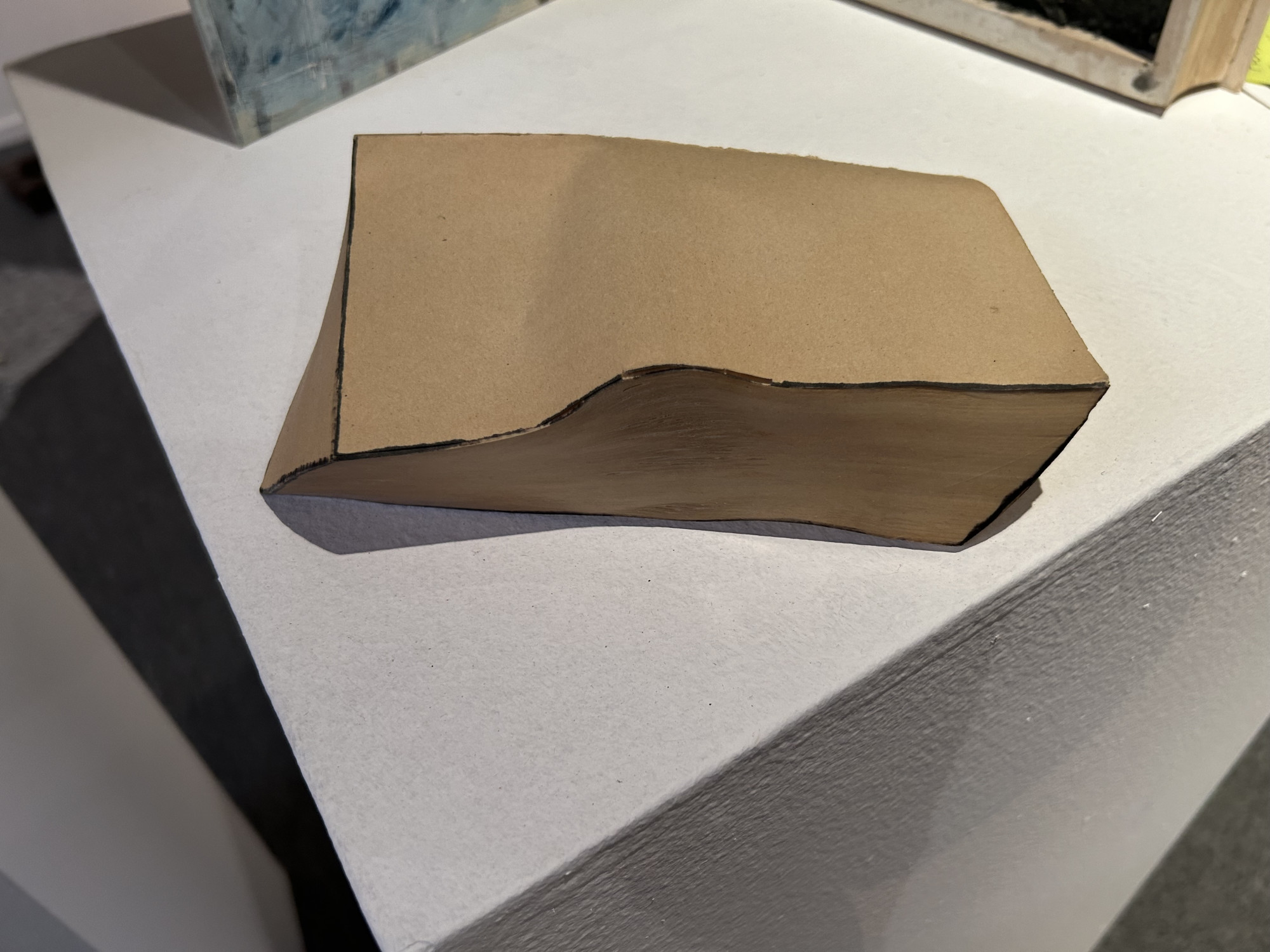
21 - Gulsen Calik, Fictitious Characters
Gulsen Calik (Turkish)
Book construction, 2 1/2 x 7 inches
A book is a version of the world. If you do not like it, ignore it; or offer your own version in return". Salman Rushdie
With books as her raw material, Gulsen Calik offers her version of the world; she deconstructs and reconstructs books, altering their shape, pages, order, function and content.
While William Blake, the English artist of the late eighteenth and early nineteenth centuries, who illustrated and printed his own books, is considered to be a seminal force in the artists’ book genre, it was not until the first half of the 20th century that books were a critical part of the avant-garde movements: Dada, Futurists, Bauhaus, Surrealism, Postmodernism, Fluxus, Conceptualism and Performance, all embraced the book as a medium that unites text, form and image. Following the footsteps of the historical avant-garde, Calik creates non-narrative books fusing readymade, minimalist and conceptual art into an elegant sculptural form.Though using minimalist vocabulary, Calik’s books exude warmth that is more akin to Eva Hess, who married minimalism with humanity then to the impersonal works of Donald Judd. Employing existing books, Calik ignores her found objects’ literal meaning, subverting their weightiness by converting them into abstract compositions, taken apart only to be reassembled as small three-dimensional pieces. Through the process of obliterating the printed pages’ original meanings and the symbolic powers collectively attributed to them, an intimate personal expression – an objet d’art – emerges.
In the FICTITIOUS CHARACTERS series (1983-2004), the artist alters the pages’ relationship to the spine by changing their directional movement. Twisting and rolling produces new book forms that reference written characters. While visual allusion to the book’s inscription creates tension between sculptural forms and the written word, the obliterated print retains its memory and harks back to its content.
For BEFORE AUGUST 13, 1985 — AFTER JULY 24 (1986), Calik had been working on a visual diary for almost a year. Starting with August 13, 1985 and continuing up to July 24, 1986, each day of that time period has been marked at the very tip of the page, forming meticulous rows of four columns. In a reference to a time capsule, holding sealed information left for future generations, the book was rolled into a cylinder revealing only its month, day, and year.
Writing marks the crossover from pre-history into history. Books are the evolutionary development of writing, acting as receptacles for definite knowledge and authority and have been the cornerstone of our cultural development. As writing evolved into codified languages, characters became more and more abstract. In SCITNAMES (2004), a piece that reads as "writing" on the wall, the artist imagines letters of an unspecified language that reference the mystery of thought, thus becoming a representation of language rather than language itself.
Gulsen Calik conveys her conceptual ideas via tactile volumetric forms of twisted books, torn and carved pages and it is precisely the union of form and concept that renders the work eloquent.
